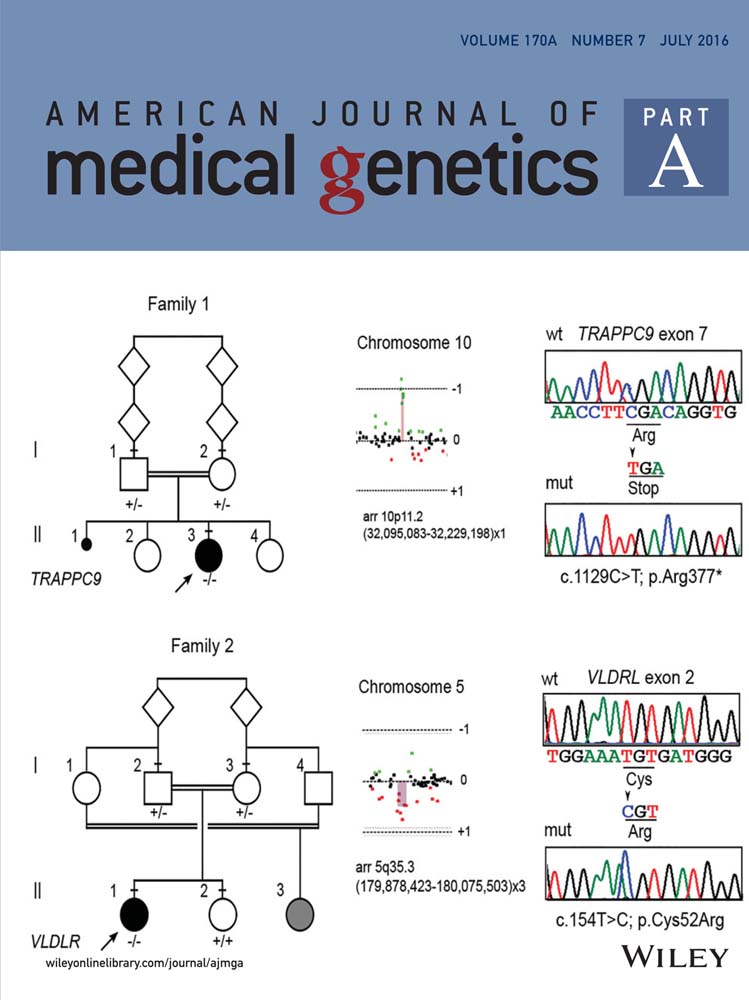Death from supine asphyxia in late onset pompe disease: Two patients
TO THE EDITOR
Pompe disease is a rare lysosomal storage disease due to a deficiency of the enzyme acid α-glucosidase [Hers, 1963]. Patients with late-onset Pompe disease (LOPD) manifest primarily with weakness and respiratory dysfunction [Pellegrini et al., 2005; Mellies and Lofaso, 2009; van der Beek et al., 2011]. We describe two LOPD patients with compromised respiratory function based on clinical assessment and pulmonary function tests (PFTs), but who were still ambulatory. They both experienced an unwitnessed fall with inability to move once supine due to profound weakness, leading to presumed asphyxia from poor supine respiratory function.
Patient 1 was a 49-year-old male diagnosed with LOPD at the age of 41 based on enzyme testing of cultured fibroblasts. During his final clinic visit, he reported inability to lay supine without use of BiPAP. He was able to ambulate using a cane and lived alone. He had a history of falling in the tub with inability to stand, and once was found 3 hr after a fall by a caregiver. During his clinic evaluation, his PFTs showed an FVC of 34% predicted and FEV1 of 36% predicted when upright, with a decrease to 10% and 9% predicted when supine, respectively. Physical therapy assessment revealed inability to go from supine to standing. One week after his appointment, he was found deceased, lying on the floor of his apartment. His brother found him and described him as appearing, “like he drowned.” An autopsy was not performed.
Patient 2 was a 62-year-old, morbidly obese female diagnosed with LOPD at the age of 51 with muscle biopsy and muscle enzyme testing. Her baseline polysomnography at the age of 57 showed no evidence of sleep apnea. She was maintained on two liters of oxygen at night for nocturnal hypoxemia. PFTs at age of 61 showed FVC of 34% of predicted, FEV1 of 35% of predicted, and FEV1/FVC of 84%, consistent with severe restrictive lung disease. Measurements were performed while upright. Supine PFTs were not performed. Because she reported feeling short of breath in any position other than completely upright, BiPAP was recommended by her local pulmonologist, but the patient did not start use. She slept upright in an electronic chair. She ambulated independently, but had a number of episodes in which she fell, was unable to get back up and had to call EMS for assistance. At the time of her death, she was found in the bathroom of her home lying prone after experiencing an apparent fall in the shower. Autopsy revealed no anatomic cause of death.
Patients with neuromuscular weakness can develop hypoventilation due to involvement of the diaphragm and other inspiratory muscles. As the disease progresses, patients may develop orthopnea due to reliance on gravity to help with diaphragm movement. Assessment of upright and supine PFTs helps determine risk for respiratory compromise. Patients with LOPD in particular require close monitoring of respiratory function due to their unique clinic presentation with early involvement of the diaphragm. In most inherited neuromuscular disorders, generalized weakness of skeletal muscles and loss of ambulation often precedes respiratory compromise. In contrast, studies indicate that motor function in Pompe disease does not correlate well with respiratory function and in many cases pulmonary involvement is the sole or prominent presenting feature [Mellies and Lofaso, 2009; Illes et al., 2014]. This may put patients in the vulnerable position of being able to ambulate and yet unable to compensate from a respiratory standpoint should they fall and become supine. Our two patients highlight this risk. It is impossible to prove definitively that respiratory compromise led to death in these unwitnessed falls. However, lack of definitive cause of death on post-mortem examination in the second patient adds support to likely respiratory failure. Patients that are at risk of pulmonary insufficiency while supine should be equipped with devices to alert EMS should they experience a fall.
ACKNOWLEDGMENTS
Sujay Kansagra has received honoraria from UCB. Stephanie L. Austin has received honoraria from Genzyme Corporation. Stephanie DeArmey has received honoraria from Genzyme Corporation and Sanofi. Dwight Koeberl has received funding for research and honoraria for lectures from Genzyme and Amicus. He has received honoraria for lectures and consultancy from Amicus and Shire HGT. He has received funding for consultancy from Brawner Consulting, Clarion Healthcare LLC, Fitzpatrick Cella Harper & Scinto, Patterson Belknap Webb & Tyler LLP, ClearView Healthcare Partners, and AskBio. Priya S. Kishnani has received research/grant support and honoraria from Genzyme Corporation, Amicus, and Shire HGT. Priya S. Kishnani is a member of the Pompe and Gaucher Disease Registry Advisory Board for Genzyme Corporation.




